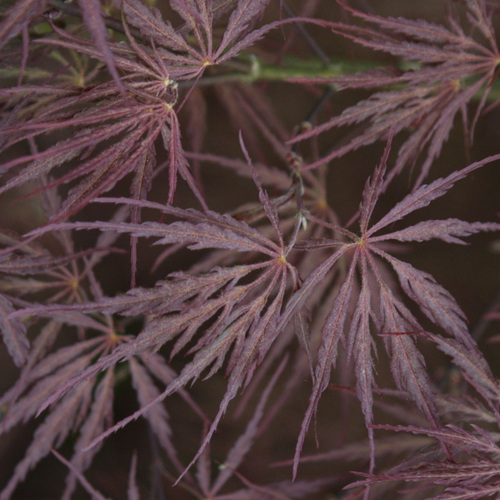Japanese maples (Acer palmatum and cvs., Zones 6–9) are prized for their graceful forms, stunning foliage, and vibrant fall colors. However, gardening in the southeastern United States poses unique challenges, particularly with heat and humidity. Fortunately, there are specific cultivars of Japanese maples that not only withstand these conditions but thrive in them. Understanding how to grow these exquisite trees requires attention to site selection and maintenance. By picking the right varieties and planting them with care, gardeners can enhance their landscapes with the beauty of these stately trees.
There are upward of a thousand Japanese maple cultivars to pick from. When choosing, first think about where you will plant it. Light exposure, soil quality, and available space should all be considered. Different cultivars showcase a range of growth habits, bark colors, and leaf shapes and colors. Below is a list of Japanese maples that range vastly in their appearances and overall sizes, and availability at nurseries in the region was considered when choosing trees to include. These really are excellent plants for the Southeast, and if I could only have one Japanese maple in my yard, it would come from this list.
Gorgeous Upright Japanese Maple Varieties
‘Emperor 1’ Japanese maple
Acer palmatum ‘Emperor 1’, Zones 5–9
A standout cultivar, ‘Emperor 1’ is known for its heat tolerance and upright growth habit. This is one of the most vigorous Japanese maples available for the Southeast. A fast-growing tree, ‘Emperor 1’ bursts into spring with bold red foliage that remains vibrant throughout summer, offering a stunning contrast against the lush greens of other plants. Its leaves transform into a fire-engine red in fall, providing a spectacular display. Unlike many red maples, ‘Emperor 1’ exhibits significantly less leaf burn, which means it is an excellent choice for hot and humid environments. This cultivar can reach heights of up to 15 feet, making it a versatile addition to larger garden spaces where it can serve as a focal point or backdrop.
Name origin: This was originally introduced by Dick Wolff at Red Maple Nursery in Pennsylvania as ‘Emperor 1’ in 1976.
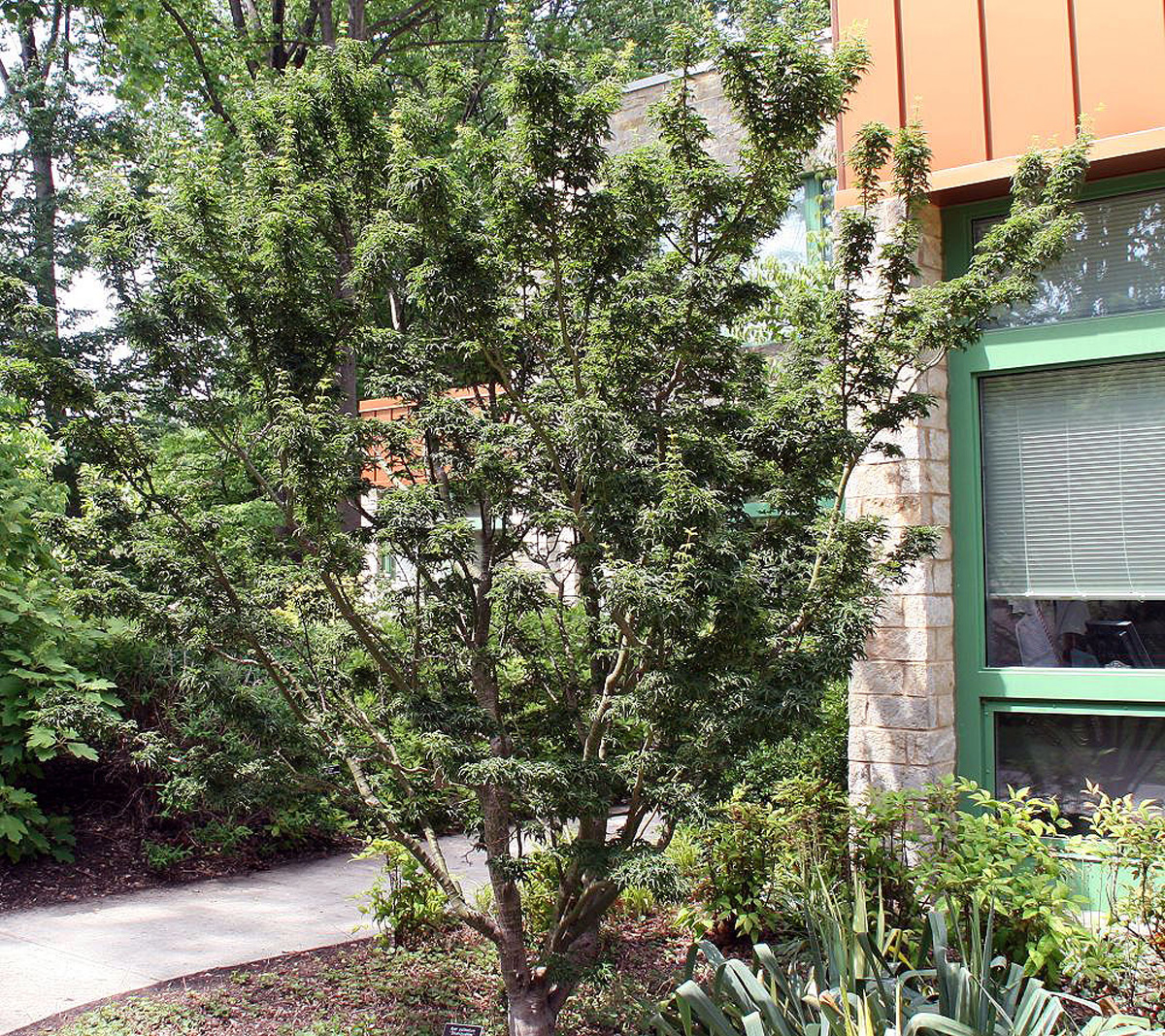
‘Shishigashira’ lion’s head Japanese maple
Acer palmatum ‘Shishigashira’, Zones 5–9
Known as the “lion’s head maple,” this is an old cultivar that thrives in hot climates. This tree showcases curled, contorted foliage that provides both visual interest and resilience, with golden-orange fall color that is consistent year after year. Its unique structure creates an eye-catching silhouette in the winter months, enhancing the seasonal appeal of the garden. ‘Shishigashira’ is less likely to suffer from leaf burn in full sun compared to other varieties, making it an excellent choice for sunny spots.
Name origin: The name “lion’s head” describes the unique contorted shape of the leaves, which can resemble the mane of a lion, and suggests strength and majesty. The translation refers to the head of a specific female lion character in Japanese drama.
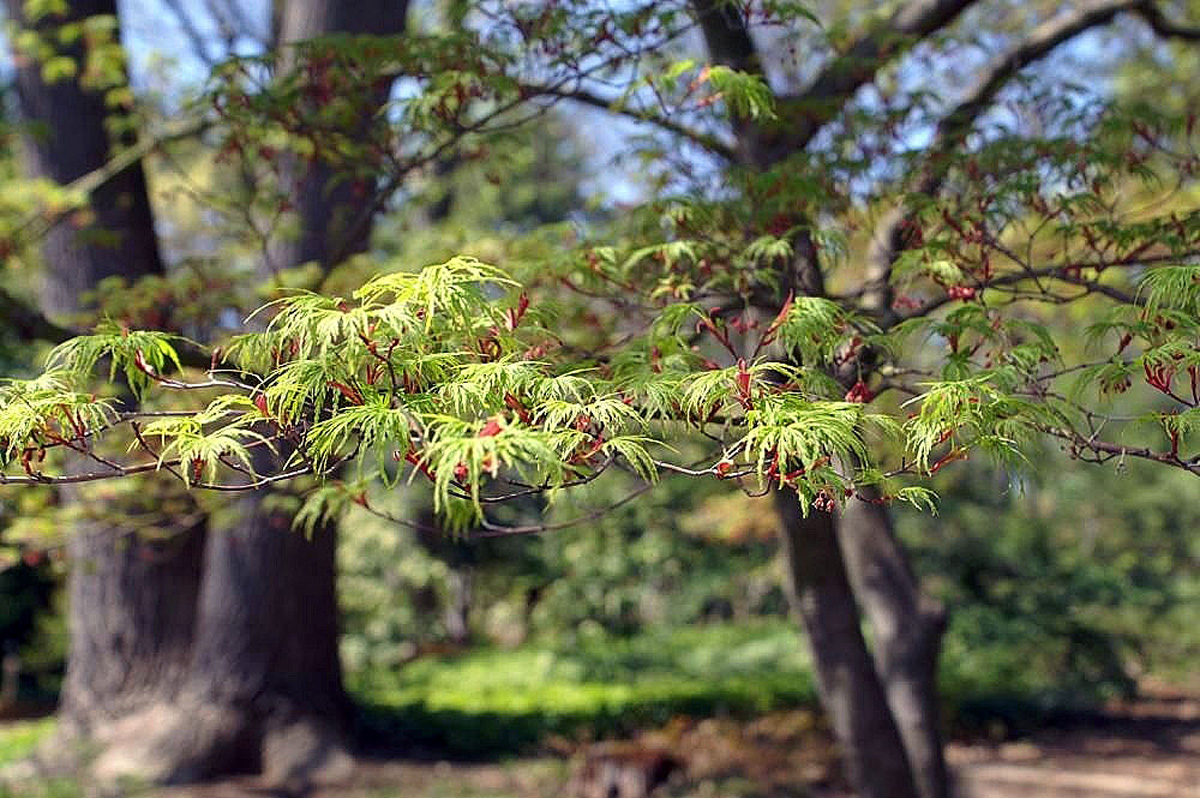
‘Seiryu’ Japanese maple
Acer palmatum ‘Seiryu’, Zones 5–9
‘Seiryu’ is a unique, upright lace-leaf variety renowned for its remarkable growth rate and heat tolerance. The finely dissected foliage presents a beautiful blue-green hue that deepens over time. As this tree matures, it develops a spectacular form that stands out in any setting. In fall, ‘Seiryu’ transforms to a rich chocolate burgundy, adding a delightful layer of color to the autumn landscape. This cultivar’s adaptability makes it a fantastic choice for gardeners looking to introduce a dramatic element to their design.
Name origin: ‘Seiryu’ combines sei meaning “blue” or “green” and ryu meaning “dragon,” making the translation “blue-green dragon.”
‘Tsukasa Silhouette’ columnar Japanese maple
Acer palmatum ‘Tsukasa Silhouette’, Zones 5–9
A stunning maple that stands out with its narrow, upright form, ‘Tsukasa Silhouette’ reaches heights of 15 to 20 feet while maintaining a graceful width of just 4 feet, especially with thoughtful pruning. This cultivar is particularly heat tolerant, exhibiting minimal leaf burn even in warmer climates, making it a resilient choice for gardens. In fall, it captivates with a striking display of mottled yellow and orange hues that arrives later in the season than that of many other Japanese maples. This provides a prolonged burst of color that enhances any landscape. Its elegant silhouette and vibrant autumn foliage make this tree a standout choice for smaller spaces in the garden.
Name origin: Introduced in Japan by Yutaka Tanaka in 2008 and named by nurserymen Don Shadow, Tsukasa is the nursery of origin and “silhouette” describes its slender form.
Weeping Japanese Maple Varieties for the South
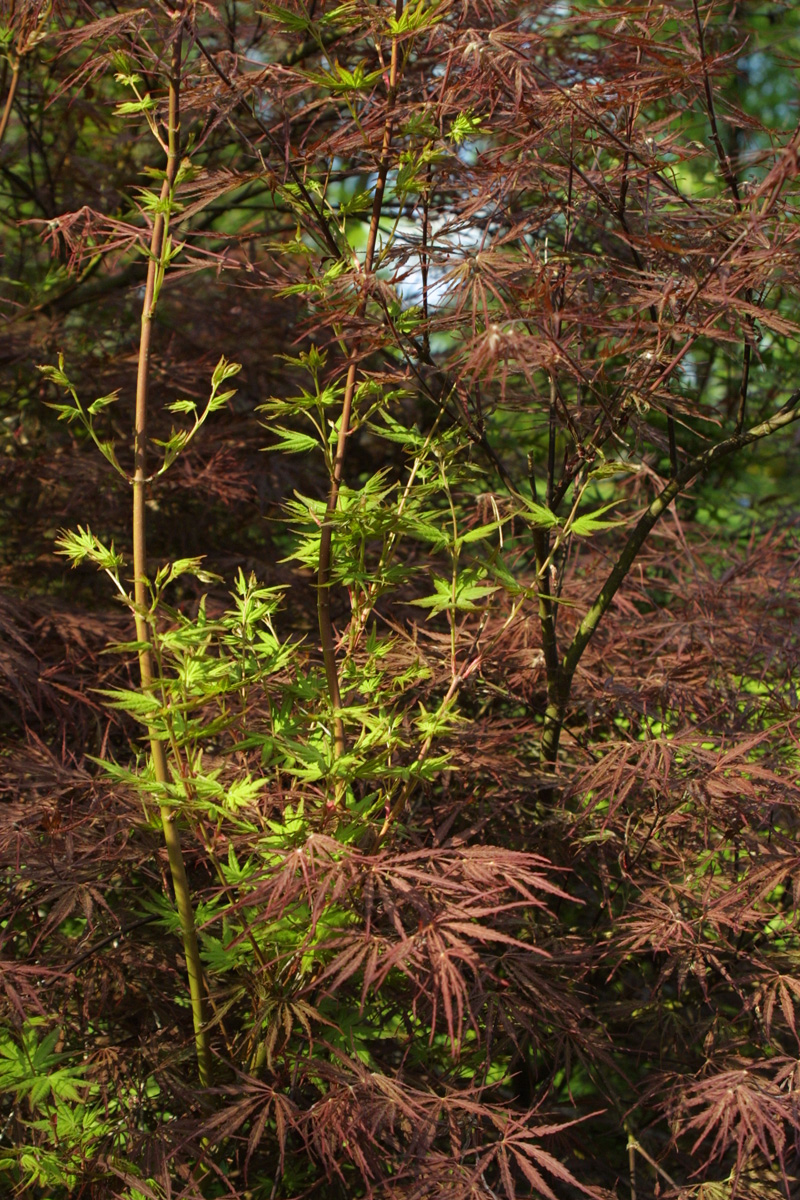
‘Tamukeyama’ weeping red Japanese maple
Acer palmatum ‘Tamukeyama’, Zones 5–9
This is a classic weeping lace-leaf Japanese maple that adds elegance to any garden. With a vigorous growth rate, reaching about 8 feet in height and width over ten years, it’s perfect for creating cascading effects in landscape design. The deeply lobed, red-purple leaves maintain their color even in full sun, providing a dramatic contrast to lighter-colored plants. ‘Tamukeyama’ is particularly suited for adding texture and movement to garden beds, and its weeping form makes it an excellent choice for container plantings or as a focal point in a Japanese-inspired garden.
Name origin: Tamukeyama means “hands folded in prayer on the mountain.”
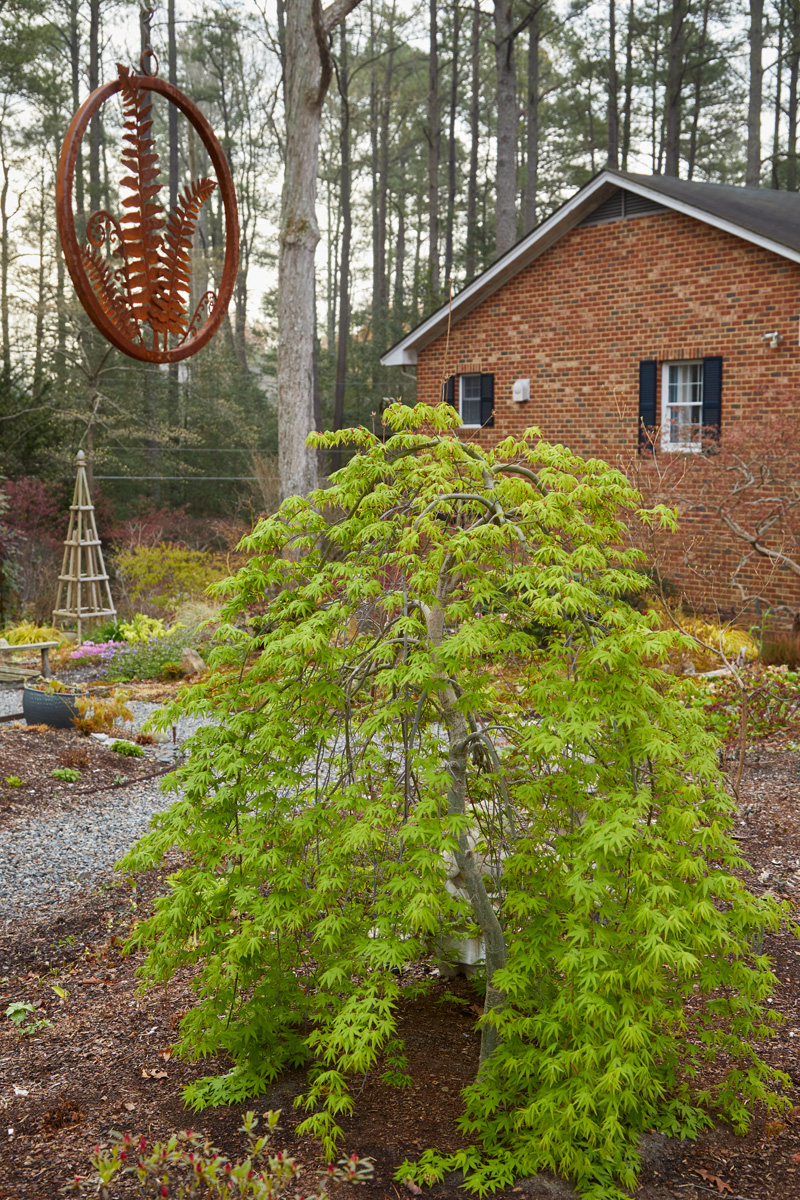
‘Ryusen’ Japanese maple
Acer palmatum ‘Ryusen’, Zones 5–9
Another exceptional cultivar, ‘Ryusen’ is known for its strong weeping habit. This tree’s foliage holds up remarkably well in full sun, maintaining its vibrant color throughout the growing season. ‘Ryusen’ can be staked to achieve a desired garden height, or it can be left without staking to spread and function as a ground cover. This versatility allows for creative garden design, making it an excellent addition to rock gardens, slopes, or mixed borders where a dangling effect is desired.
Name origin: Ryusen means “flowing spring or stream.” This captures the graceful, weeping habit of the tree, evoking the image of water flowing gently.
Dwarf Japanese Maples for Southern Gardens
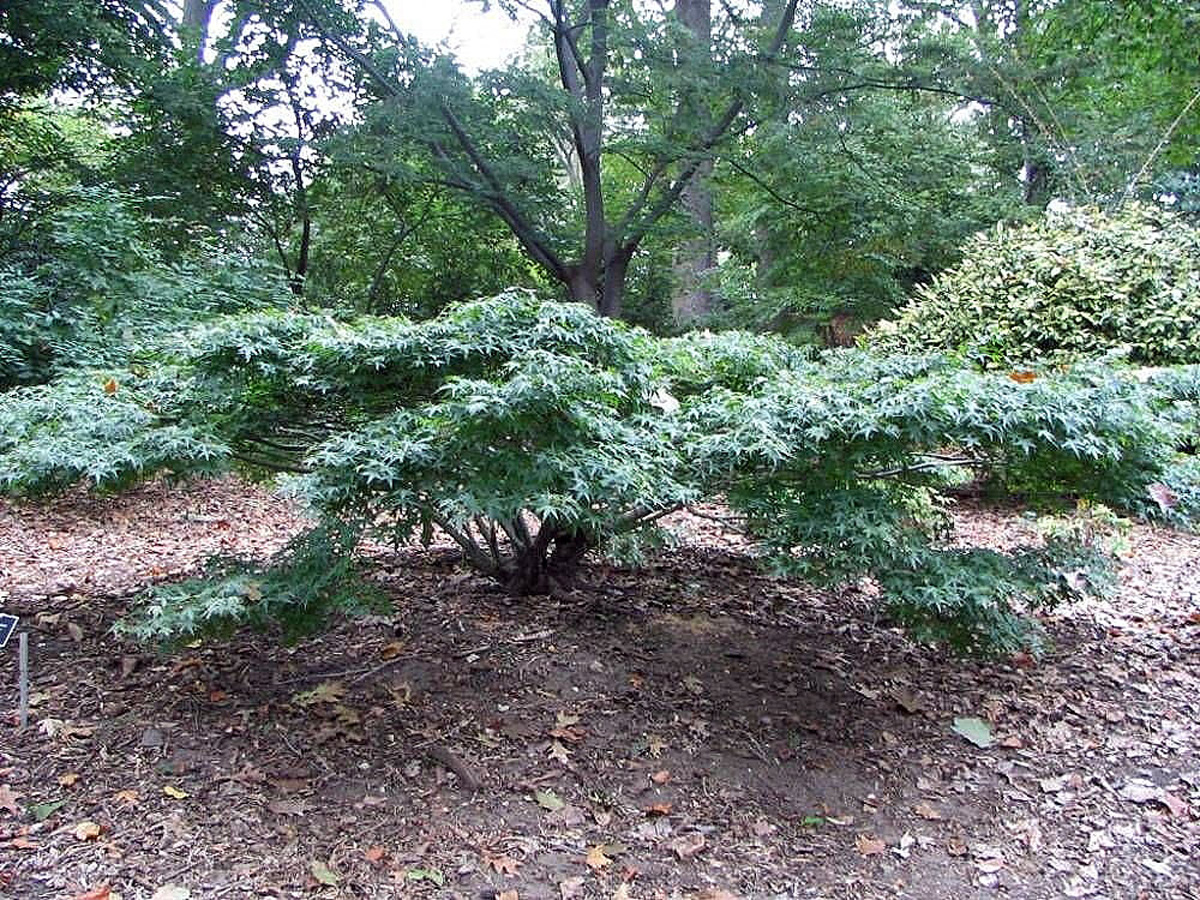
‘Kiyohime’ dwarf Japanese maple
Acer palmatum ‘Kiyohime’, Zones 5–9
For those seeking a low-growing option, ‘Kiyohime’ is a delightful choice. This dwarf cultivar is celebrated for its colorful spring display, with leaves that emerge outlined in red before transitioning to a rich green throughout the growing season. Typically reaching only 3 to 4 feet in height and twice as wide, ‘Kiyohime’ is ideal for smaller gardens or as a charming accent in larger landscapes. Its compact form and resilience in the heat make it a standard favorite among Southeastern gardeners, providing year-round interest with minimal maintenance.
Name origin: Kiyohime means “pure princess” or “clean princess.” The name reflects a sense of refinement, highlighting the cultivar’s delicate beauty. Also, this is the name of a famous female antagonist in Japanese literature.
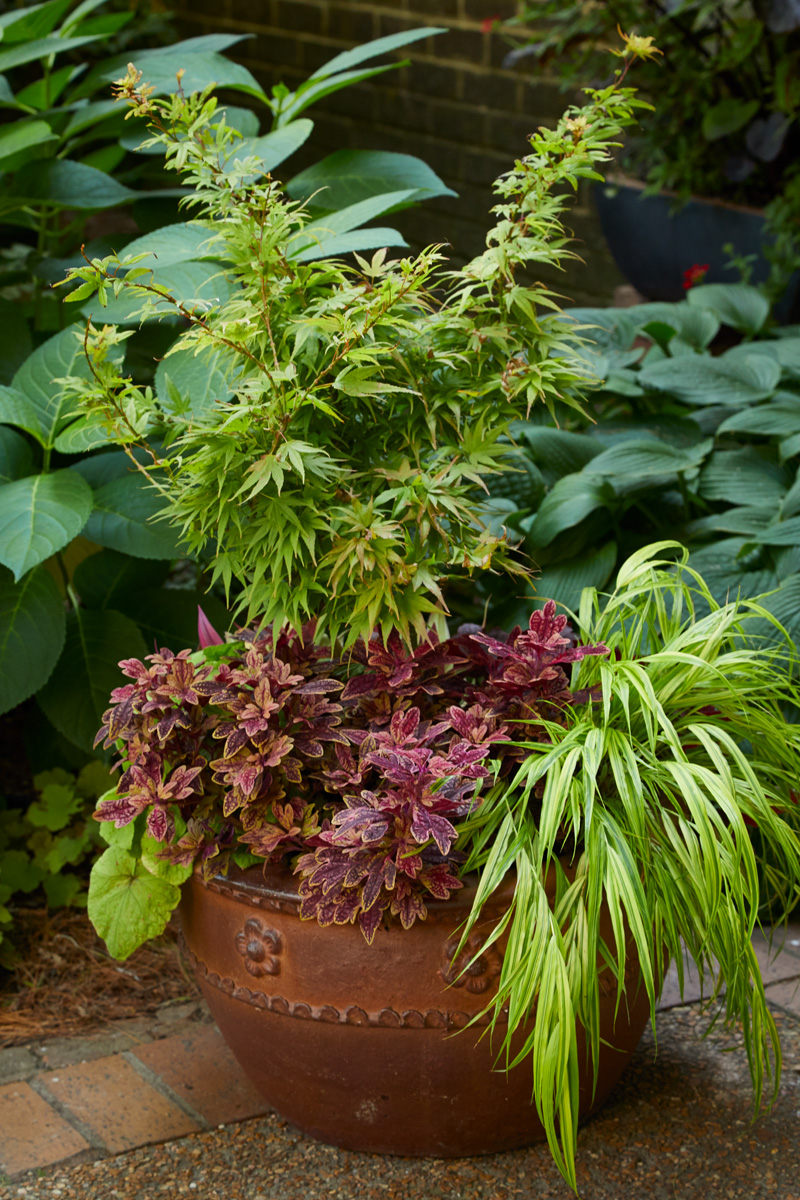
‘Mikawa Yatsubusa’ dwarf Japanese maple
Acer palmatum ‘Mikawa Yatsubusa’, Zones 5–9
Finally, ‘Mikawa Yatsubusa’ is a favorite among Japanese maple enthusiasts for its unique layered leaves and dwarf stature. This cultivar is particularly notable for its resilience against leaf burn, thriving even in full sun. Its compact form reaches about 3 to 4 feet tall in 10 years (larger over time), making it perfect for smaller spaces or container gardening. In fall, ‘Mikawa Yatsubusa’ displays a stunning orange-gold color, enhancing its appeal and providing year-round interest.
Name origin: Mikawa refers to a region in Japan. Yatsubusa means “eight layers” or “piled,” indicating the unique, layered structure of its leaves.
Tips for Growing Japanese Maples in the Southeast
Here are some guidelines for growing Japanese Maples in the heat and humidity of the Southeastern United States:
1. Research cultivars for your specific growing conditions and choose wisely.
2. Don’t leave Japanese maples to their own devices; artful and carful pruning when trees are young will lead to better looking plants later. Removing dense interior growth can additionally improve the air movement through the trees. This can deter fungal disease.
3. Watch out for reflective heat. Reflective surfaces like bright white siding, glass, or stones that retain heat can lead to leaf or root burn of Japanese maples.
4. Don’t plant too deeply. Ensure you can clearly see the root flare on trees; don’t be afraid to plant slightly above grade.
5. Check roots at the time of planting. It is not unusual for containerized plants to have root defects, including girdling roots. Correct these at planting time.
6. Water regularly until establishment. Once established, you can prevent some leaf-burn by giving plants supplemental water during prolonged dry spells.
Growing Japanese maples in the Southeast can be a deeply rewarding experience, allowing gardeners to enjoy the beauty and diversity of these remarkable trees. When incorporating Japanese maples into your garden design, consider their unique forms, colors, and growth habits. By choosing the right cultivars and providing the proper care, you can create a stunning landscape filled with color and elegance, ensuring that your Japanese maples thrive in the Southern heat and humidity. Embrace these captivating trees and watch your garden transform into a serene oasis of beauty and tranquility.
Andy Pulte is a faculty member in the plant sciences department at the University of Tennessee.
Fine Gardening Recommended Products

DeWalt Variable-Speed Cordless Reciprocating Saw
You can fit a variety of blades to this saw to cut fallen branches or prune larger limbs from trees in a pinch. It’s fast, tough, easy to use, and extremely versatile.
– 18.31 x 6.13 x 4 inches
– 1-1/8-inch stroke length
– Variable speed trigger with 0-3000 spm

DeWalt Variable-Speed Cordless Reciprocating Saw with 6-Piece Saw Blade Set
You can fit a variety of blades to this saw to cut fallen branches or prune larger limbs from trees in a pinch. It’s fast, tough, easy to use, and extremely versatile.
– 18.31 x 6.13 x 4 inches
– 1-1/8-inch stroke length
– Variable speed trigger with 0-3000 spm
– DW4856 Metal/Woodcutting Reciprocating Saw Blade Set, 6-Piece

